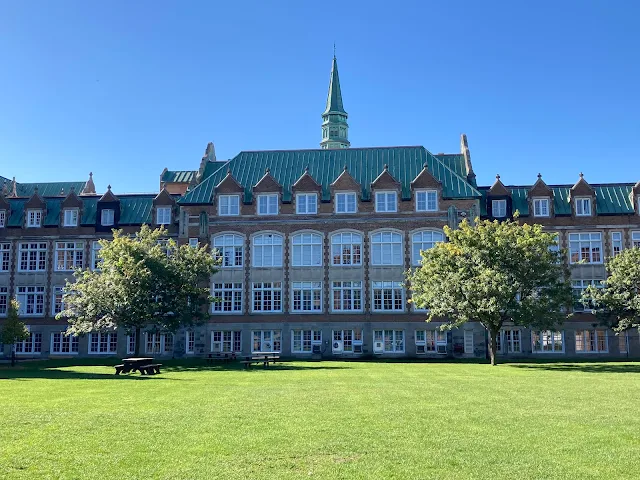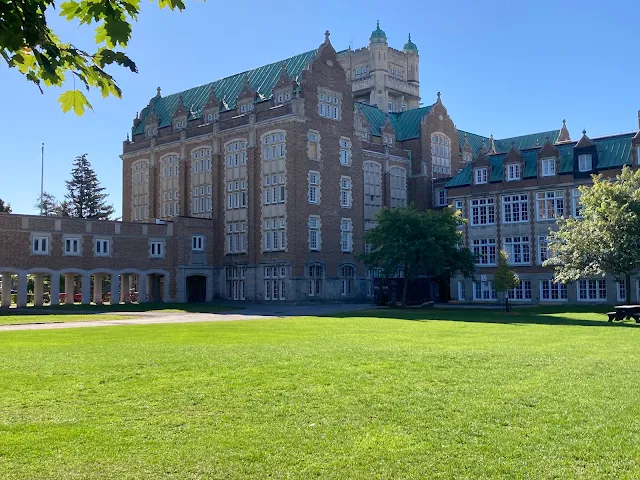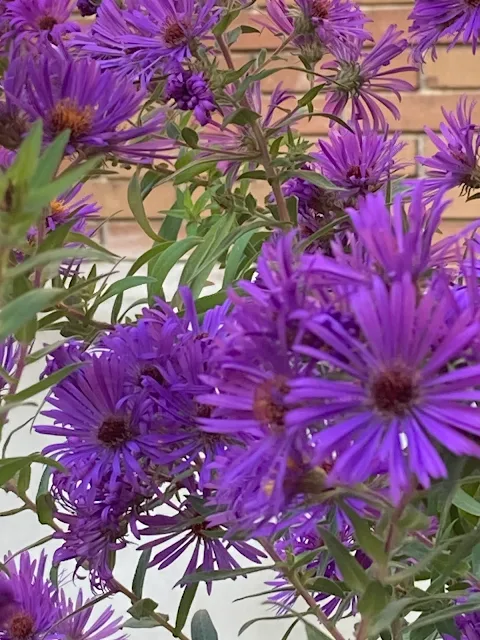. . . and out for a morning walk. 18 October 2024.
Thursday, October 31, 2024
Wednesday, October 30, 2024
“Revolution 9” by The Beatles
Well, do it next time.
I forgot about it, George, I'm sorry.
Will you forgive me? Am
Yes.
Number 9, number 9, number 9, number 9, number 9
Number 9, number 9, number 9, number 9, number 9
Number 9, number 9, number 9, number 9, number...
...then there's this Welsh Rarebit wearing some brown underpants
...about the shortage of grain in hertfordshire
Everyone of them knew that as time went by they'd get a little bit older and a litter slower but...
It's all the same thing, in this case manufactured by someone who's always/umpteen ...
Your father's giving it diddly-i-dee/district was leaving...
Intended to die ... Ottoman
...long gone through...
I've got to say, irritably and...
...floors, hard enough to put on ... per day's MD in our district
There was not really enough light to get down
And ultimately ... slumped down
Suddenly...
They may stop the funding...
Place your bets
The original
Afraid she'll die ...
Great colours for the season
Number 9, number 9
Who's to know?
Who was to know?
Number 9, number 9, number 9, number 9, number 9
Number 9, number 9, number 9, number 9, number 9
Number 9, number 9
I sustained nothing worse than ...
Also, for example
Whatever you're doing
A business deal falls through
I informed him on the third night, when fortune gives...
People ride, people ride
Ride, ride, ride, ride, ride
Number 9, number 9, number 9, number 9
Ride! Ride!
Number 9, number 9, number 9, number 9
...I've missed all of that
It makes me a few days late
Compared with, like, wow!
And weird stuff like that...
...taking our sides sometimes
...floral bark
Rouge doctors have brought this specimen
I have nobody's short-cuts, aha...
9, number 9
...with the situation
They are standing still
The plan, the telegram...
Number 9, number...
A man without terrors from beard to false
As the headmaster reported to my son
He really can try, as they do, to find function...
Tell what he was saying, and his voice was low and his hive high
And his eyes were low...
Alright!
It was on fire and his glasses were the same
This thing knows if it was tinted
But you know it isn't
To me it is...
Number 9, number 9, number 9, number 9, number 9
Number 9, number 9, number 9, number 9, number 9
Number 9
So the wife called me and we'd better go to see a surgeon to price it ...
Yellow underclothes
So, any road, we went to see the dentist instead
Who gave her a pair of teeth which wasn't any good at all
So I said I'd marry, join the fucking navy and went to sea
In my broken chair, my wings are broken and so is my hair
I'm not in the mood for whirling
How? Dogs for dogging, hands for clapping
Birds for birding and fish for fishing
Them for themming and when for whimming
...only to find the night-watchman unaware of his
presence in the building
Number 9, number 9, number 9, number 9, number 9
Number 9
Industry allows financial imbalance
Thrusting it between his shoulder blades
The Watusi, the twist
Eldorado
Take this, brother, may it serve you well
Maybe it's nothing
What? What? Oh...
Maybe, even then, impervious in London
...could be difficult thing...
It's quick like rush for peace is because it's so much
Like being naked
It's alright, it's alright
It's alright, it's alright
It's alright, it's alright
It's alright, it's alright
It's alright
If, you became naked
Recorded 30, 31 May, 4, 6, 10, 11, 20, 21 June, 16 September 1968
Saturday, October 26, 2024
On The Prisoner television show
 |
| McGill University campus, 1940s |
The Beatles “Revolution 9” could be used as a surrealistic sound track, played over a psychedelic montage of images, for Patrick McGoohan’s television drama, The Prisoner (1967-1968). The protagonist in The Prisoner is played by McGoohan, a former secret agent who suddenly resigns his post but offers no explanation for his decision. McGoohan’s former employer finds his sudden resignation suspicious and McGoohan is abducted from his home and finds himself incarcerated at an unknown seaside location referred to as The Village; his identity is also attacked, he is referred to by his new name, Number Six; the head of The Village is, of course, Number One. The Village is a precursor, and suggestive of, the 15-minute city; in this case it is a place to keep former government employees, all with numbers for names, and they live in relative freedom (the freedom of farm animals), socializing, playing chess, reading The Village newspaper, and some inhabitants are informers on other inhabitants of The Village. The Village is no gulag, it might be called a benevolent incarceration, it is comfortable but no one can leave and the authorities are always attempting to either control or get information out of the inhabitants, and they are all prisoners. But Number Six is not a typical inhabitant, he fights back, he tries to escape. When interrogated Number Six repeats, “I Am Not a Number; I Am a Free Man”; his strength lies in his not surrendering to his jailers, his remaining freedom lies in his refusal to give up information about himself. He says, "I will not make any deals with you. I've resigned. I will not be pushed, filed, stamped, indexed, briefed, debriefed, or numbered! My life is my own!" The whole series of seventeen episodes is a metaphor for our own existence; who do we believe and what do we believe? There is a penalty for noncompliance with the authorities, it is to be an outcast, detained, attacked, and denied one’s freedom; it is to be gaslighted. While other inhabitants of The Village have been pacified, Number Six constantly challenges the authority of his jailers; he is more determined than the other prisoners. No one escapes from The Village, attempted escape results in being chased down by an ominous giant inflated object called Rover, and inhabitants of The Village are constantly surveilled by CCTV. The Village is a dystopia somewhere between George Orwell’s 1984 and Aldous Huxley’s Brave New World; it predates the 15 minute city. What else can we take from The Prisoner? It is that we are now, and have always been, prisoners, prisoners of ideas, race, social class, wealth, privilege or poverty, politics, our birth, gender, age, and/or religion, and this has decided the purpose and meaning of our existence. Our prison is self made and no one can free you but yourself. The Beatles were fans of The Prisoner and a Beatles song, “All You Need is Love”, was played during in the final episode; is it any wonder that the refrain, "Number Nine, Number Nine", is repeated in The Beatles most idiosyncratic song, “Revolution 9”? The Prisoner is both a psychological and political metaphor for contemporary life, now more so than in 1967. I nominate Laurence Fox to play in any remake of The Prisoner or a life of Patrick McGoohan.
Be seeing you.
Friday, October 25, 2024
Thursday, October 24, 2024
Wednesday, October 23, 2024
Tuesday, October 22, 2024
Honey bees in asters, early October 2024
Asters are the honey bees last collection of pollen and nectar before everything seems to close down in the garden. There is a long winter ahead of us and this is a short reprieve of still mild weather before the cold, snow, and short days and long nights.




















































